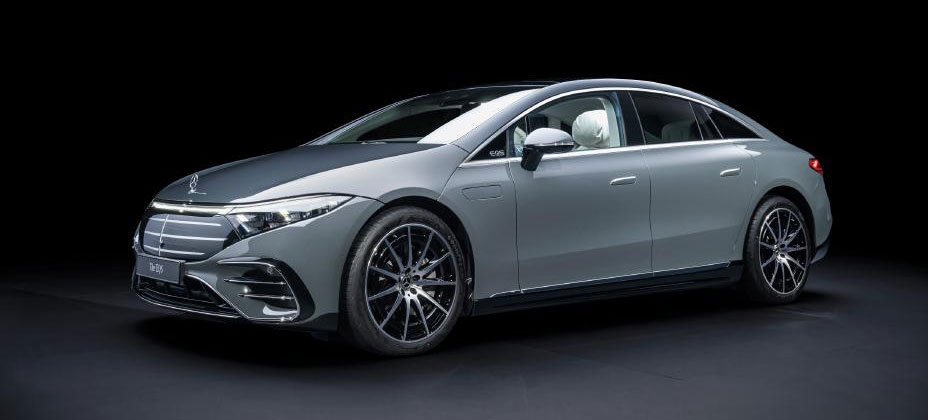New DOT Safety Rule Will Save Lives of Electric Car Drivers

The U.S. Dept of Transportation’s National Highway Traffic Safety Administration just passed a much more aggressive requirement that could significantly improve a car’s ability to avoid accidents.
I’ve owned two electric cars so far and, sadly, totaled both of them.
The first was totaled because a tow truck driver secured the car improperly when it needed to be towed back to the dealer. That mistake caused $100,000 worth of damage to a vehicle worth about half that much.
In the second accident, the car nearly killed me after knocking me out. It then accelerated rapidly to around 50 mph, hit another car, and continued to accelerate into a rock wall (which was not amused). The accident-avoidance technology clearly failed or wasn’t enabled in this incident.
Thus, the new Department of Transportation (DOT) rule requiring advanced safety tech on all new cars and trucks could have saved my car and me from breaking my back and potentially saved the life of anyone in a similar accident.
This week, I’ll share what happened in that accident, why we need autonomous driving’s Guardian Angel feature, and why this new DOT rule is quite literally a lifesaver. We’ll close with my Product of the Week, the first operational Level 3 car based on Nvidia’s technology to be sold in the U.S.
My Auto Accident
Two days after being T-boned in what is one of the most dangerous intersections where I live, I found myself at that intersection after the sun went down. I was unable to see cross traffic well because it was so dark. I was scared half to death as cars were backed up around me. My view was blocked by a car on the right from seeing what was approaching from the right, and I couldn’t tell the distance of the vehicles coming from the left.
Since my near accident had come from the left, I leaned forward as I entered the intersection not realizing that in the meantime, a car had approached from the right and blocked my passage (I was going straight). When I hit that car going around 15 mph, it fired the airbag, which knocked me out; my foot went to the floor, accelerating me into the car I hit (electric cars have a ton of torque), which pushed that car through the intersection and across the street.
As I accelerated to around 50, I hit a curb, the car nearly jumped over a fence, and my back was broken in the process. I then rammed a rock wall after the airbag had deflated, totaling the car. When I came to, the police had already arrived, and the EMTs and fire trucks were just pulling up.
I should add that so many people have had accidents at that intersection that they just made it into a four-way stop because there were several serious accidents after mine. The business owner on the corner had reported his parked vehicles were hit regularly in similar accidents.
The plan is to turn that intersection into a traffic circle eventually, but given the lack of visibility, it should have always been a 4-way stop.
Electric Car Problem
In a gas car without cross-traffic alerting or active accident avoidance, if you hit a car as I did, the car would have stalled even if I’d tried to floor it, resulting in far less damage and injury. However, electric cars generate 100% torque from a stop, and, as I unfortunately found out, they can not only power through an accident, but they can continue to accelerate at supercar speeds afterward.
Had I not hit that rock wall, I would have accelerated to triple digits and assured my death when I finally did hit something that would stop the car. So, I was lucky I hit that rock wall.
This event exemplifies why electric cars need far more robust accident prevention technology than gas cars, at least for collisions that might knock the driver unconscious.
Autonomous Car Advantage
The current plan is that autonomous car technology will require a monthly fee to enable it (the tech will initially appear in most high-end electric vehicles). But if you don’t want the car to drive itself, it will also come with a free feature that Toyota once called Guardian Angel.
Guardian Angel uses autonomous car tech to prevent doing something stupid like I did. It will take control of the car if it senses you are doing something that could get you injured or killed. This technology will ensure that the lifesaving and injury-reducing features that autonomous car technology promises will be achieved.
However, until the DOT ruling, it was unlikely this technology would be on anything but the most expensive and exclusive cars, not moving down market until closer to or after 2030.
DOT Steps In
However, last week, the DOT effectively mandated that the collision prevention benefits from Guardian Angel will soon be required in all cars. This technology is required in electric vehicles to avoid accidents with cars and pedestrians through avoidance up to 62 mph and heavy braking up to 45 mph.
While this requirement won’t kick in until 2029 so that people can get used to it as an option and to allow time to improve the technology, it will start appearing with the coming wave of autonomous vehicles through the Guardian Angel feature in the 2025 model year in cars like the Mercedes highlighted below as my Product of the Week.
This implementation should not only force Guardian Angel down market to less expensive cars more quickly but also help ensure more people are protected than otherwise would have been by 2030.
Wrapping Up
Due to my recent accident and the related pain I’ll suffer for the rest of my life, I was extremely interested in this recent ruling by the DOT. This forced march to better collision avoidance would have saved my car and my back and better protected my life had it already been in place.
The ruling will make electric cars, which can shrug off accidents that would stop gas cars, a great deal safer. It will also reduce accidents with other vehicles and massively reduce the number of pedestrians killed on roads.
Also, hopefully, it will prevent me from ever totaling another car. But in the end, if you want to keep yourself and your family safe, consider cars with advanced accident avoidance as a way to assure premature death before this new DOT mandate takes place.
Nice work, DOT!

Mercedes EQS With Level 3 Autonomous Driving
The Mercedes EQS electric and gas-powered S-Class are the first two cars approved for hands-off Level 3 autonomous driving in the U.S. Currently, they are only certified in California and Nevada, but I expect broader certification in the coming months.
I’m focusing on the EQS and not the S-Class because the EQS is electric, which is where this technology, as a safety feature, will have the greatest impact, given the issue I noted above with electric cars. The technology, which largely comes from Nvidia (again showcasing that company’s leadership in everything AI) is called Drive Pilot and will include advanced collision avoidance technology as all autonomous cars do.
The EQS is a luxury vehicle typically costing north of $120,000, but it’s not a high-performing electric with a 0 to 60 time of close to 6 seconds. It does have 350 miles of range, though, making it one of the leaders in electric range.
Be aware that if you want more than just the additional safety benefits, Drive Pilot will cost you around $2,500 per year. As a Level 3 system, it will only work hands-free on highways (Level 4 is cities, and 5 is complete human replacement). The EQS has both sedan and SUV configurations, and while the design isn’t as sporty as I’d like, it is still a very clean and nice-looking vehicle.

The 2025 Mercedes-Benz EQS Sedan will arrive at U.S. dealerships later in 2024. (Image Credit: Mercedes-Benz USA)
Mercedes is already known as one of the safest brands in the Midsized Luxury Car market, and the EQS, with this advanced self-driving technology, should be one of its safest. By the way, they make AMG and Maybach versions of this car, so you have higher performance and even more luxury choices, but the price quickly gets closer to $200,000 and is likely way too expensive for most.
In the end, no one wants to be in an accident, and we all want to keep our families and pets safe. With Drive Pilot, the Mercedes EQS should be the safest electric car on the road in 2024 and is now my Product of the Week.




